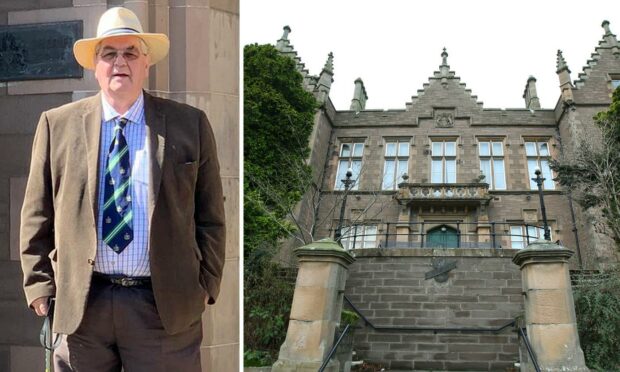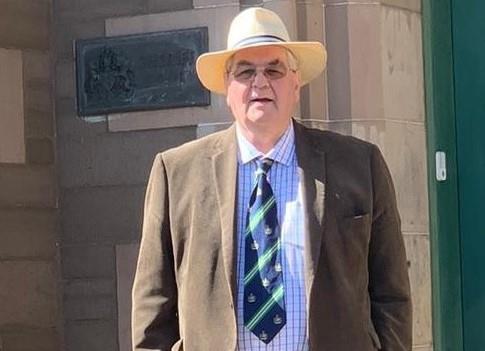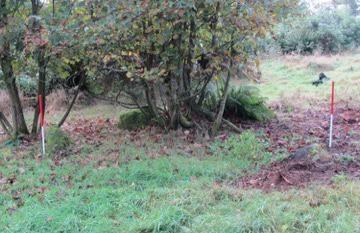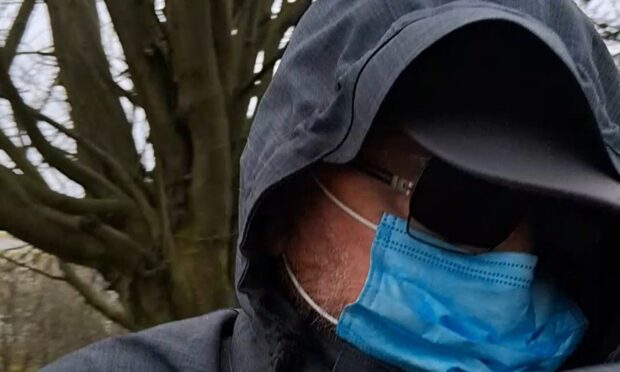An acquitted Tayside farmer has hit out at the public body he says needlessly dragged him through the courts.
Last month, Andrew Simpson was found not guilty of damaging historic stones at Baldovie Woods on his estate near Kirriemuir.
He had been warned the ancient items were on the land where clearing work was being done.
However, he marked the wrong rocks for workers and the Neolithic stones were disturbed.
Some of the stones alleged to have been disturbed were not even on Mr Simpson’s land.
Sheriff Jillian Martin-Brown said he had taken reasonable steps to avoid their destruction when the case came to Forfar Sheriff Court.
‘Intimidation and harassment’
The 82-year-old told The Courier he has always strongly refuted any criminality but acknowledged the unfortunate incident was brought about by the poor condition of the stone circle, leaving it “impossible to interpret” as a protected monument.
Perthshire-based Mr Simpson slammed Historic Environment Scotland (HES) and accused the heritage watchdog of abusing its power.
He thinks the the prosecution was malicious.
“The manner in which HES, a public body, investigated and proceeded with this case was one full of malice and intent to prosecute at all costs.
“Their overly formal approach throughout their investigations amounted to intimidation and harassment and their misrepresentation of the facts caused greater reputational damage.
“Bear in mind that this whole investigation has arisen as part of an unfortunate incident, caused predominantly by the inadequate information supplied by HES and the poor upkeep of a historic monument by the body publicly funded to care for Scotland’s historic environment.
“Within their role as a public body HES have been guilty of an abuse of power, which does not inspire good relations between the HES office and the landowners in the country and works directly against their stated mission and values.
“There needs to be a clear balance between working with landowners to promote the upkeep of Scotland’s history, whilst acting in the public interest to protect the blatant destruction of the historic environment.
“This particular case did not fall into the category of the public interest and thousands of pounds of tax payers money have been used in an attempt to haul a large-scale farmer over the coals for no public gain and to try to turn an innocent party into a criminal.
“Even the basic facts have been misreported by Historic Environment Scotland. We feel that this situation could have been avoided if procedures and communications had been better from the beginning to make it easier for the land owner to identify relevant sites.
“The measure of a successful procedure is that the least able person is able to interpret, understand and execute to avoid mistakes happening – precisely the situation in this case.”
‘Committed to investigate damage’
A spokesperson for HES said: “We note the court’s decision to acquit in this case.
“HES is committed to investigating incidents of damage to scheduled monuments. We work closely with landowners to provide advice and guidance about their responsibility in relation to scheduled monuments.
“We will review this case in light of the court’s findings.”
During proceedings, Sheriff Martin-Brown heard evidence that prior to being granted a tree-felling licence, Mr Simpson was handed a map by the Forestry Commission and told not to damage marked monuments.
Mr Simpson’s office explained after the damage was reported by a dogwalker, Forestry Commission representatives could not find the stones initially and had to return for a second site visit with co-ordinates.
A Scottish Forestry spokesperson said: “It is the applicant’s duty to determine whether there are any protected sites and in doing this they are required to check with HES and other organisations with an interest – this is before applying for a felling permission.
“They would then be aware of any constraints to their proposed work and this would be detailed in their application along with how they intended to manage them.”












